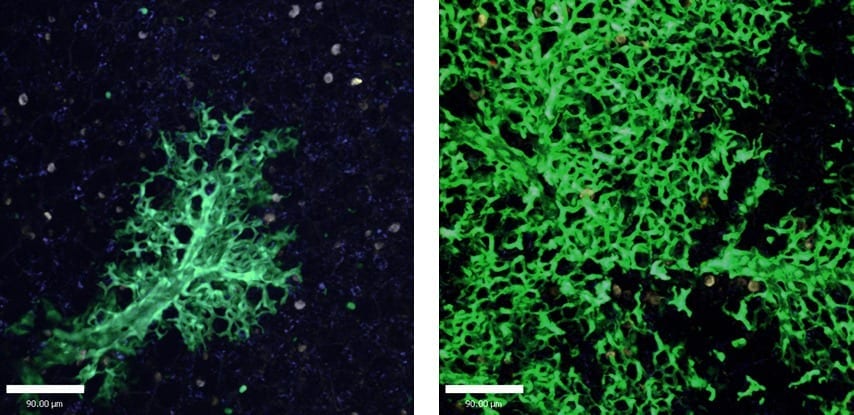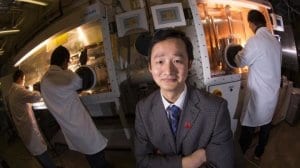
Collectively, such diseases of the airways as emphysema, bronchitis, asthma and cystic fibrosis are the second leading cause of death worldwide.
The Latest on: Stem Cells Might Heal Damaged Lungs
[google_news title=”” keyword=”Stem Cells Might Heal Damaged Lungs” num_posts=”10″ blurb_length=”0″ show_thumb=”left”]
via Google News
The Latest on: Stem Cells Might Heal Damaged Lungs
- Stem Cells Newson April 29, 2024 at 5:00 pm
When the team transplanted bone marrow stem cells from mice carrying a hereditary ... aplastic anemia to understand how a subset of cells might be trained to correct the overzealous ...
- New prototype that regenerates stem cells may repair IPF scarringon April 26, 2024 at 10:42 am
Researchers developed NZ-97, an inhalable drug that stimulates the growth of stem cells in the lungs, potentially repairing scarring in IPF.
- Stem cell treatment for brain diseases praisedon April 18, 2024 at 5:00 pm
Taken together, the two United States studies mark a milestone in stem cell research that might one day lead to ... particularly the damaged tissue found in diseases such as Parkinson's disease." ...
- Myelin Sheath: What to Knowon April 14, 2024 at 5:00 pm
It acts as insulation, similar to the plastic coating around electrical wires, keeping your nerve cells safe. It helps electrical signals move fast and smoothly from one nerve cell to another.
- Redesigned drug could boost lung healingon April 10, 2024 at 5:00 pm
As we age, it becomes harder to heal ... stem cells throughout the body lose their regenerative oomph. Scientists at Scripps Research reported this week on a molecule that coaxes stem cells in the ...
- How a new drug prototype regenerates lung tissueon April 9, 2024 at 5:00 pm
For many progressive lung diseases like idiopathic pulmonary fibrosis (IPF), a key issue is a low supply of new stem cells to repair and reverse damage. These cells are responsible for ...
- Stem cellson March 14, 2024 at 5:00 pm
Rod Neander, from Canada, flies to Sheffield to thank the man whose stem cells helped save his life. Kevin McPike, who has a type of leukaemia, secured a stem cell donor match through his brother.
- Mesenchymal Stem Cells News and Researchon March 13, 2024 at 5:01 pm
Researchers unveiled a novel therapy for diabetic wound healing. This research highlights the use of exosomal miR-4645-5p from hypoxic bone marrow mesenchymal stem cells (BMSCs) to significantly ...
- COPD: cure could come from transplanting patient's own lung cells into damaged partson December 19, 2023 at 9:32 pm
The research, led by scientists from Tongji University in China, saw experts examine whether a type of cell called P63 positive lung progenitor cells might ... from their stem cells, and which have ...
- The Stem Cell Divideon September 14, 2023 at 5:53 am
Bypassing the use of mouse cells is not only easier, but it also eliminates the risk that therapeutic stem cells might carry rodent ... or suffer damage to their DNA, but the Koreans are expert ...
via Bing News










